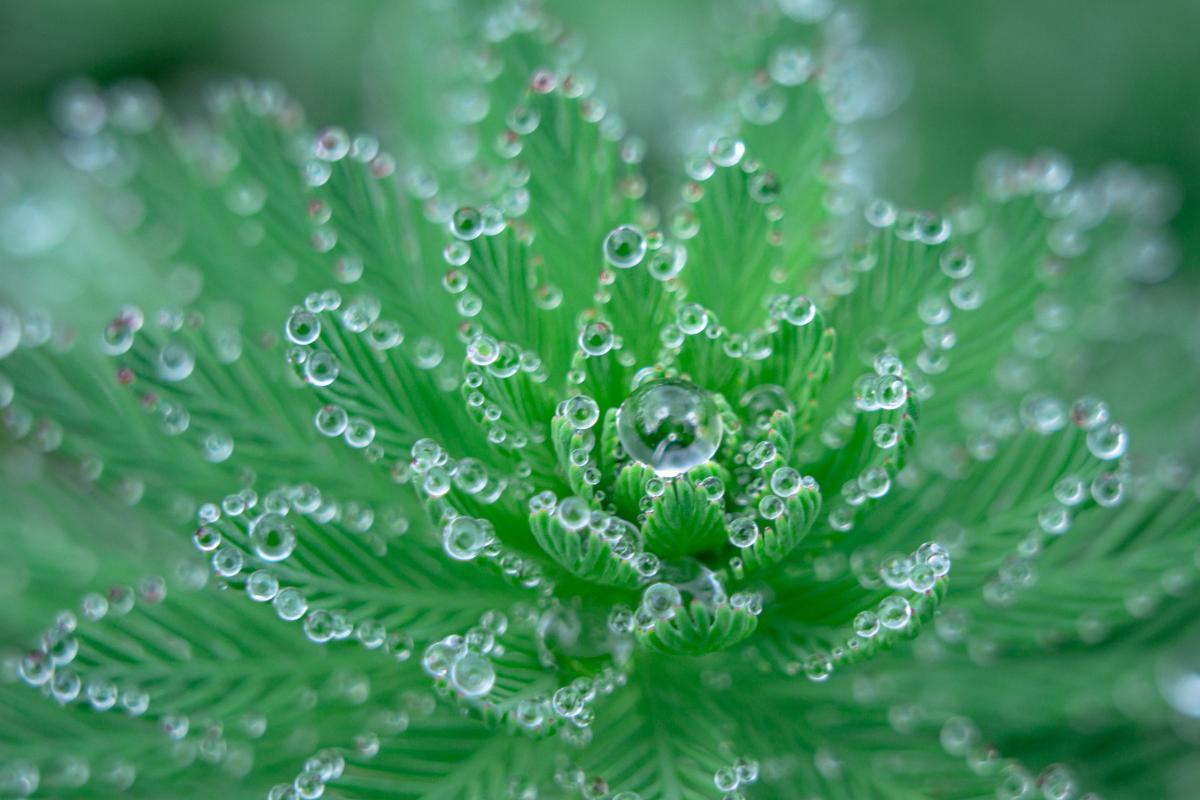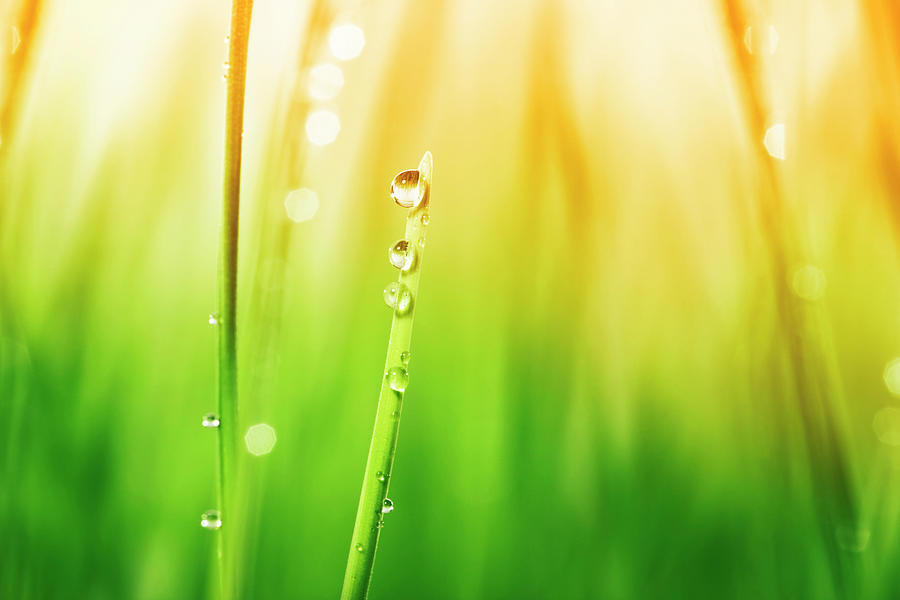Dew gardening has emerged as a fascinating trend among eco-conscious gardeners and plant enthusiasts. This method leverages the natural phenomenon of morning dew to keep plants hydrated and healthy, especially in arid or drought-prone regions. As more people seek sustainable and low-maintenance ways to care for their gardens, dew gardening offers a unique solution that aligns with nature’s rhythms.
In this article, we’ll explore the science behind dew, its benefits for plants, and how you can incorporate dew gardening into your routine. Whether you’re an experienced gardener or just starting out, understanding the power of dew can transform your approach to plant care.
Understanding Morning Dew
Morning dew is a natural occurrence that happens when water vapor in the air condenses on cool surfaces during the night or early morning. This process is influenced by several factors:
- Humidity Levels: Higher humidity encourages more dew formation.
- Temperature Drop: Greater temperature differences between day and night promote condensation.
- Surface Characteristics: Rough or textured surfaces like leaves facilitate dew accumulation.
- Wind Conditions: Calm nights allow dew to settle, while strong winds may prevent it.
This delicate layer of moisture not only enhances the visual appeal of a garden but also plays a crucial role in plant health and growth.
The Benefits of Dew for Plants

While the amount of water from dew might seem minimal, it still contributes significantly to plant hydration, especially in dry or arid climates. Here are some key benefits:
1. Hydration Support
Dew provides an additional source of water for plants outside of rainfall or irrigation. During dry spells or in arid regions where rainfall is scarce, dew can be a critical water source. Leaves absorb water directly through their surface to some extent, helping maintain cell turgidity and reducing drought stress.
2. Leaf Temperature Regulation
Dew droplets on leaves can help moderate leaf temperature by absorbing heat during sunrise and evaporating later in the day. This cooling effect protects leaves from overheating under intense sunlight and reduces thermal stress.
3. Nutrient Absorption Enhancement
Water is essential for nutrient uptake because minerals dissolved in soil moisture move through roots to various parts of the plant. When soil is dry but dew moistens foliage, some nutrients can also be absorbed foliar-wise through stomata or cuticles, aiding overall nutrition.
4. Facilitating Photosynthesis and Respiration
Photosynthesis requires optimal leaf hydration for stomatal function—the tiny pores on leaves that regulate gas exchange. Dew helps keep these pores hydrated during early morning hours, promoting efficient carbon dioxide intake and oxygen release.
Ecological Benefits of Dew for Plants
Beyond individual plant physiology, morning dew contributes significantly to ecosystem health:
1. Supporting Microhabitats
Dew creates a moist microenvironment on leaf surfaces that supports beneficial microorganisms such as bacteria and fungi. These microbes often play symbiotic roles by aiding nutrient cycling or protecting plants from pathogens.
2. Reducing Soil Moisture Loss
By providing direct moisture to plants and their immediate surroundings, dew reduces reliance on soil water alone. This buffering effect can slow down soil drying rates overnight, maintaining better hydration for root uptake when daytime heat returns.
3. Promoting Seed Germination
Some seeds require moisture on their surfaces to break dormancy and initiate germination processes. Dew deposits provide this crucial moisture layer during cool mornings, especially in xeric (dry) environments where rain is infrequent.
Comparing Dew and Rainwater for Plants

While both dew and rain are vital sources of moisture, they differ in quantity and impact:
| Aspect | Morning Dew | Rainwater |
|---|---|---|
| Quantity | Small amounts | Larger volumes |
| Frequency | Occurs regularly in many climates | Variable based on weather |
| Source | Atmospheric condensation | Precipitation via clouds |
| Effect on Soil | Minimal direct impact | Replenishes soil moisture |
| Effect on Leaves | Direct leaf wetting | Leaf wetting plus soil infiltration |
| Role in Dry Periods | Important supplemental water | Primary water source |
Despite its smaller volume compared to rainfall, dew’s consistent presence can be particularly beneficial during drought or in ecosystems where rain is unpredictable.
How Plants Have Adapted to Use Dew
Plants in arid and semi-arid regions have evolved unique adaptations to maximize benefits from morning dew:
- Leaf Morphology: Some plants have hairy or waxy leaf surfaces that capture more dew droplets.
- Orientation: Leaves positioned horizontally increase surface exposure for condensation.
- Stomatal Behavior: Certain species open stomata at night or early morning to utilize atmospheric moisture better.
- Water Absorption Structures: Specialized cells capable of absorbing water directly from dew have been identified in some desert plants.
These adaptations illustrate how critical dew is as a survival mechanism in harsh environments.
Implications for Gardeners and Farmers

Understanding the benefits of morning dew can inform better gardening and farming practices:
1. Minimizing Disturbance During Early Hours
Avoiding early morning pruning or leaf spraying ensures that plants maintain their natural dew layer, allowing them to gain the maximum hydration advantage.
2. Selecting Plant Varieties Suited for Dew Utilization
In regions prone to drought, choosing plants with traits favoring dew collection can improve garden resilience without excessive watering.
3. Leveraging Dew for Organic Pest Control
Dew supports beneficial insects and microbes that naturally keep pests at bay. Maintaining conditions conducive to dew formation indirectly promotes biological control agents.
4. Scheduling Irrigation Wisely
Irrigating late in the day rather than early morning might be more efficient since natural dew contributes moisture at dawn; this approach prevents overwatering.
Potential Drawbacks: When Dew Can Harm Plants
Though generally advantageous, under certain conditions, morning dew may contribute to problems:
- Fungal Infections: Prolonged leaf wetness creates ideal circumstances for fungal spores to germinate and spread diseases such as powdery mildew or leaf spot.
- Reduced Photosynthesis if Excessive: Excessive moisture may block sunlight temporarily or cause physical damage due to water weight.
- Encouraging Pests: Some insect pests thrive in moist environments facilitated by frequent dew.
Proper airflow and balanced garden hygiene help mitigate these risks while preserving the benefits of morning dew.
Conclusion

Morning dew is more than just a beautiful natural occurrence; it is a vital component supporting plant health across diverse environments. By providing supplemental hydration, regulating temperature, enhancing nutrient uptake, and fostering beneficial microhabitats, dew plays multifaceted roles that contribute significantly to plant vitality.
Recognizing the ecological importance of morning dew enables gardeners, farmers, and conservationists to harness its benefits while managing potential downsides effectively. Whether you tend a home garden or cultivate crops commercially, appreciating this delicate gift from nature will deepen your connection with the rhythms of plant life and improve your stewardship of green spaces.
In essence, morning dew is a silent ally—offering plants nourishment before sunrise, sustaining life quietly yet powerfully every day.
Frequently Asked Questions
Q: How long does it take morning dew to dry off the grass?
A: The sun is higher in the sky between the hours of 8 and 10 in the morning, allowing the grass to dry from the overnight dew. The sun won’t bake you because it’s still too early for the heat of the day.
Q: Does dew water your lawn?
A: For plants, dew alleviates water stress through three basic mechanisms. Reduced transpiration (the release of water into the atmosphere through pores in plant leaves) is caused by water that has been dropped on grass and leaves. Dew creates a barrier of protection on the leaf, preventing transpiration until it evaporates.
Q: Is it OK to cut grass with morning dew?
A: It is advised against trimming your grass in the morning and afternoon. Even though the temperature and humidity are normally lower at dawn, cutting wet grass too early can leave ruts, causing the grass to clump and settle, clog your mower, and harm the roots of your lawn.
Q: Why is there water on grass in the morning?
A: Dew is the term for the moisture on the grass. The moisture that results from condensation is known as dew. When a substance transforms from a gas to a liquid, it goes through the process of condensation. So, the conversion of water from a vapor to a liquid causes dew.
Q: Is morning dew good for lawns?
A: The seed bed is kept moist by morning dew, and evaporation is slowed down by the sun’s softer rays. It’s the ideal time to build that stunning lawn that your neighbors will enviously admire from over your fence because the soil temperatures are still warm and the rains have been cool.
Final Thoughts
Dew gardening is a growing trend that offers a sustainable and effective way to keep your plants hydrated and healthy. By understanding the science behind dew and its benefits for plants, you can make informed decisions that enhance your garden’s vitality and beauty.
Whether you’re looking to reduce water usage, support biodiversity, or simply enjoy the serene beauty of a dew-covered garden, dew gardening is a practice worth exploring. With a little knowledge and careful planning, you can harness the power of nature to create a thriving, resilient garden.
Stay updated with the latest trends in dew gardening and discover how you can make a difference in your own backyard.











More Stories
What Is Yodo Para Tiroides and How Does It Affect Thyroid Health?
How to Claim Your Joy in League of Legends: A Step-by-Step Guide
What is WSET? A Comprehensive Guide to Wine Education